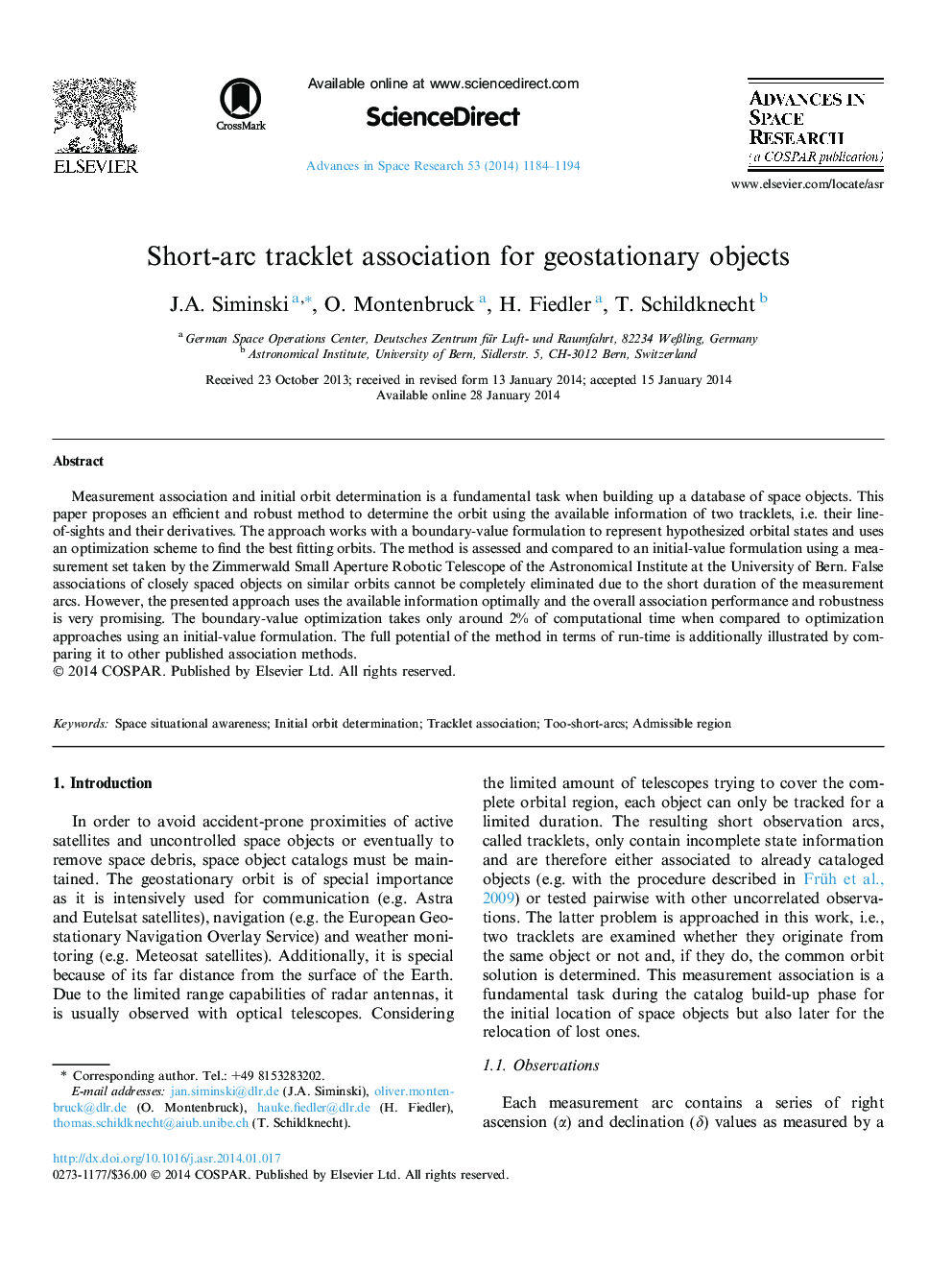| Article ID | Journal | Published Year | Pages | File Type |
|---|---|---|---|---|
| 1763763 | Advances in Space Research | 2014 | 11 Pages |
Measurement association and initial orbit determination is a fundamental task when building up a database of space objects. This paper proposes an efficient and robust method to determine the orbit using the available information of two tracklets, i.e. their line-of-sights and their derivatives. The approach works with a boundary-value formulation to represent hypothesized orbital states and uses an optimization scheme to find the best fitting orbits. The method is assessed and compared to an initial-value formulation using a measurement set taken by the Zimmerwald Small Aperture Robotic Telescope of the Astronomical Institute at the University of Bern. False associations of closely spaced objects on similar orbits cannot be completely eliminated due to the short duration of the measurement arcs. However, the presented approach uses the available information optimally and the overall association performance and robustness is very promising. The boundary-value optimization takes only around 2% of computational time when compared to optimization approaches using an initial-value formulation. The full potential of the method in terms of run-time is additionally illustrated by comparing it to other published association methods.
